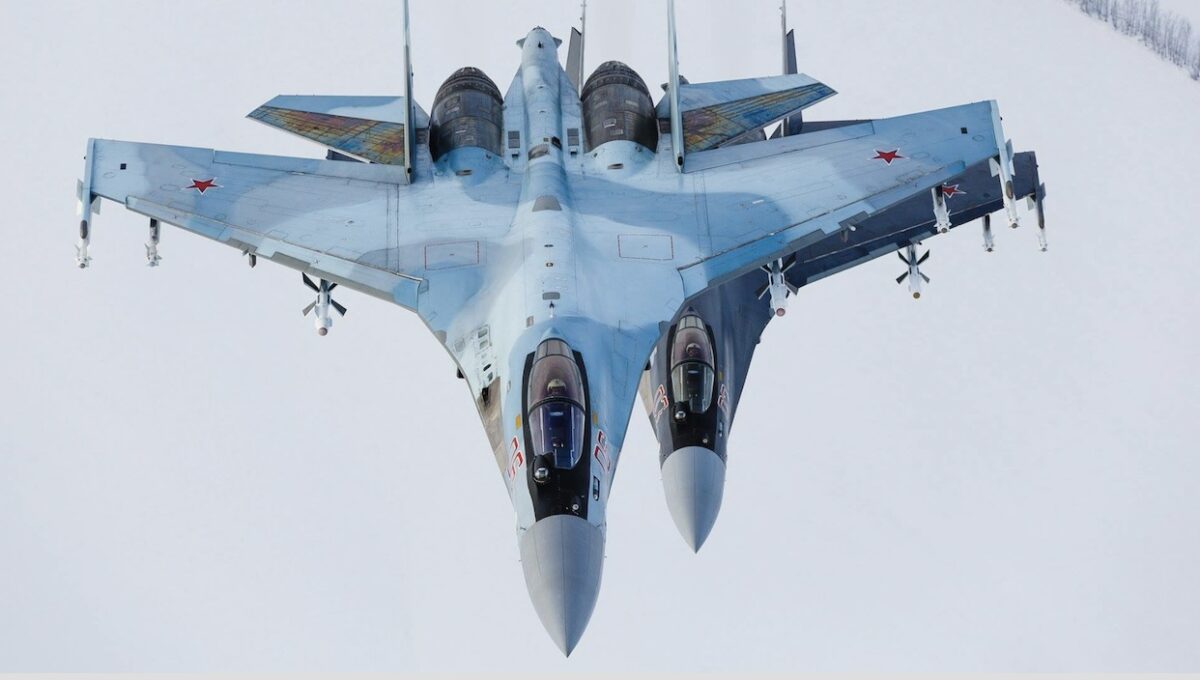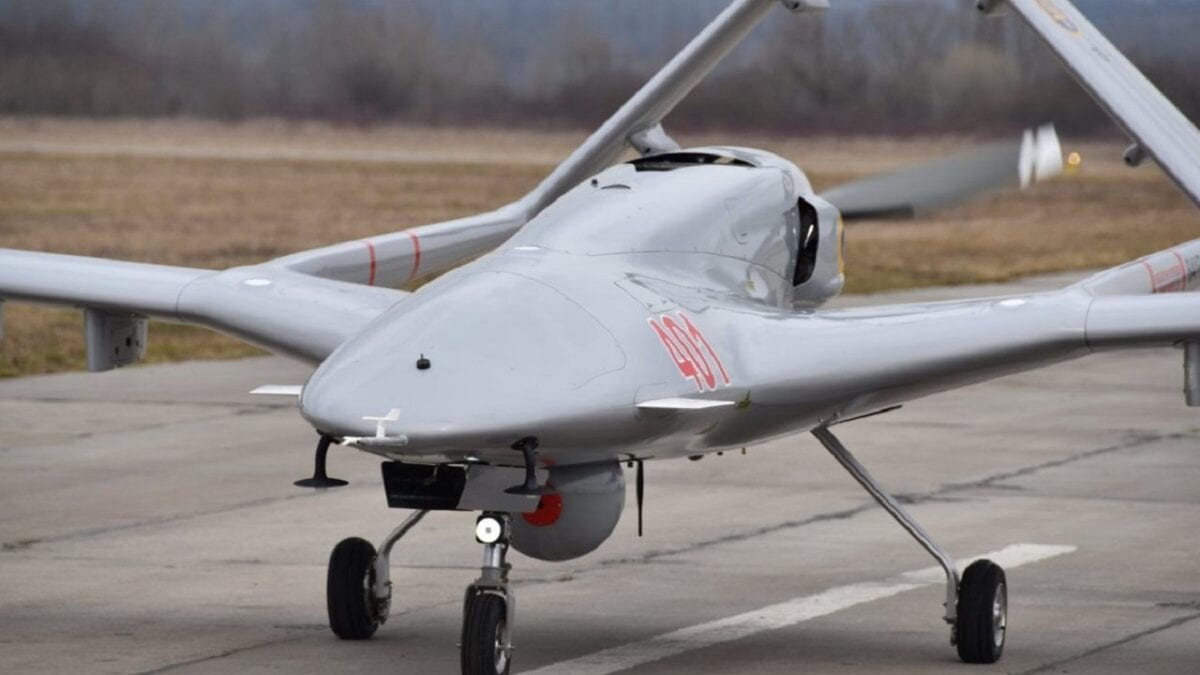A video published by a Wall Street Journal reporter made headlines this week for depicting a truly extraordinary scene in the skies over Ukraine. The widely-circulated footage depicts a Ukrainian Su-27 Flanker engaging in close aerial combat with a Russian fighter jet in the Donbas region.
A literal dogfight in the skies over Donbas tonight. Ukrainian SU-27 shooting flares toward a guided missile fired by a Russian fighter jet, not caught in this footage. The few residents remaining in Pokrovsk rushed out to gape at the spectacle and applaud. pic.twitter.com/GmJnO7HghR
— Matthew Luxmoore (@mjluxmoore) August 18, 2022
Matthew Luxmoore, the capturer of the scene, tweeted “A literal dogfight in the skies over Donbas tonight. Ukrainian SU-27 shooting flares toward a guided missile fired by a Russian fighter jet, not caught in this footage. The few residents remaining in Pokrovsk rushed out to gape at the spectacle and applaud.” Since fighting between Russia and Ukraine has primarily involved artillery exchanges across the front line of the conflict, this week’s aerial spectacle is a unique marker in the ongoing war.
The accompanying text to the video written by Luxmoore suggests that a Ukrainian Air Force Su-27 Flanker fighter jet was firing infrared flares in response to a Russian jet’s infrared-guided air-to-air missile (AAM). The Su-27 is a Soviet-era twin-engine, highly maneuverable fighter that is nicknamed “Flanker” by the North Atlantic Treaty Organization (NATO). The airframe was developed in the 1970s as a counter to the American-made fourth-generation Grumman F-14 Tomcat and McDonnell Douglas F-15 Eagle. The Flanker is currently in service with Russia, Belarus, Kazakhstan, Indonesia, Uzbekistan, Vietnam, and Ukraine.
Soviet-Era Legacy
Following the fall of the Soviet Union, 72 Su-27 fighters based in Ukraine remained. According to the Smithsonian Magazine, “Many of the aircraft were from early, inferior production blocks. In 2009, amid declining relations with Russia, the Ukrainian air force began to have difficulty obtaining spare parts from Sukhoi, and maintenance became thorny. Although total aircraft numbers have declined only slightly—five Su-27s have been lost to pilot error and nine more sold abroad—many airframes have become sources of spares for the active fleet.”
The Russian Air Force primarily flies more advanced Flanker variants, including the S-50SM, Su-35, and the Su-35S. However, it is unclear in the circulated video whether the targeted Russian aircraft was in fact one of these jets, or another aircraft altogether.

Image: Creative Commons.
Despite Moscow equipping its pilots with newer and supposedly more sophisticated fighters, Ukraine’s arsenal of older airframes has put up a formidable fight amidst the ongoing invasion.
Over the weekend, Brig. Gen. Oleksiy Gromov, a deputy chief attached to the Ukrainian General Staff, claimed that 24 Russian Su-35s had been “downed by Ukrainian forces.” According to Business Insider, the deputy chief also asserted that only nine of 24 Su-35s twin-engine fighter jets purchased by China for $2.5 billion in 2015 had “arrived in operational condition due to unspecified defects” in their avionics systems. While both claims have not been verified, the reputation of Russia’s jet fleet has certainly been tarnished.
Dogfight Over Pokrovsk
Despite the missing information regarding this week’s dogfight, the spectacle certainly showcased an exceedingly rare moment in the conflict. Neither Russia nor Ukraine was able to establish total air dominance and appear to have pulled back from major air engagements.
Instead, drone warfare has certainly taken the stage in recent months as the primary weapon of choice in the air. Ukraine’s possession of Turkey’s Bayraktar TB2 unmanned aerial vehicle (UAV) has proved to be an instrumental asset in its resistance against Moscow’s invasion. In addition to providing cutting-edge intelligence collection and attack mechanisms, the drone has played a critical role in the war’s information sphere.

Bayraktar TB2 Drone of the Ukrainian Air Force.
The aerial videos captured by the TB2 have lent to the international community’s support for Ukraine’s defensive position. On the other side, Russia uses the smaller Orlan-10 drone, which allows its forces to spot targets and guide artillery fire toward them. While drone use became more mainstream in the 2020 Nagorno-Karabakh conflict between Azerbaijan and Armenia, its dominance in the Russian-Ukrainian war is unprecedented in modern conflict.
While the Ukrainian Forces may have the advantage when it comes to drones, its aging fighter fleet makes it technically the weaker competitor in the airspace. This week’s captured dog fight emphasizes the fact that despite Ukraine’s lacking air dominance, its fleet of fighters continue to stand its ground against Russia’s advances.
Maya Carlin is a Middle East Defense Editor with 19FortyFive. She is also an analyst with the Center for Security Policy and a former Anna Sobol Levy Fellow at IDC Herzliya in Israel. She has by-lines in many publications, including The National Interest, Jerusalem Post, and Times of Israel.

